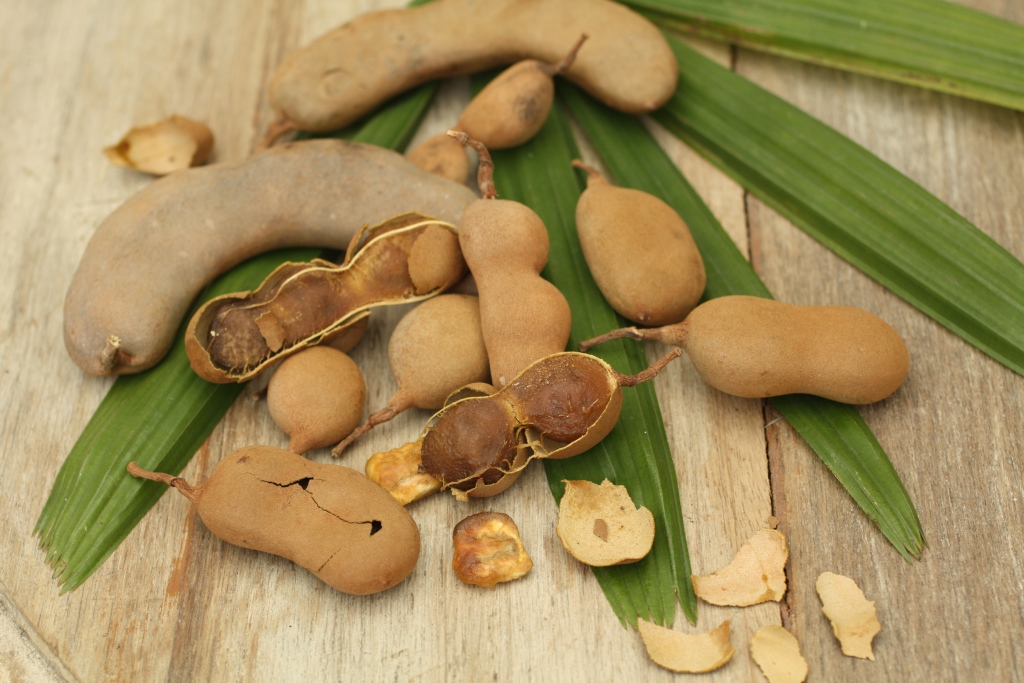Tamarind

Description
Tamarind is from a curved brown bean-pod from the tamarind tree. The pod contains a sticky pulp enclosing one to ten shiny black seeds. It is the pulp that is used as a flavouring for its sweet, sour, fruity aroma and taste. It is available as a pressed fibrous slab, or as a jamlike bottled concentrate, and some Indian shops carry the dried pods.
Bouquet: a slightly fruity aroma.
Flavour: a refreshing sour taste
Preparation and Storage
If using the tamarind slab, steep a little in hot water for ten minutes, mash into a paste and pass through a sieve. The fine pulp and juice will go through, leaving behind the fibrous husk. Tamarind slabs and paste store well and will last for up to a year. Tamarind pods will last indefinitely as they require maceration to release their juice.
Culinary Uses
Usually it is the juice or paste that is used as a souring agent, particularly in south Indian and Gujarati lentil dishes, curries and chutneys, where its flavour is more authentic than vinegar or lemon juice. It may be used to flavour pulse dishes, rice dishes, or as an ingredient in sauces and side dishes for pork, fowl and fish. Tamarind contains pectin which is used in the manufacturing process of commercially produced jams, so it is a natural ingredient in many jams, jellies, fruit drinks, and is vital to Worcestershire sauce. In India, the ground seed is used in cakes. A refreshing drink made from tamarind syrup and resembling lemonade is quite popular in the Middle East.
Attributed Medicinal Properties
Tamarind is considered a mild laxative and digestive. It is used to treat bronchial disorders and gargling with tamarind water is recommended for a sore throat. It is antiseptic, used in eye-baths and for the treatment of ulcers. Being highly acidic, it is a refrigerant (cooling in the heat) and febrifuge (for fighting fevers). The Ananga Ranga suggests consuming tamarind for enhancing a woman’s sexual enjoyment.
